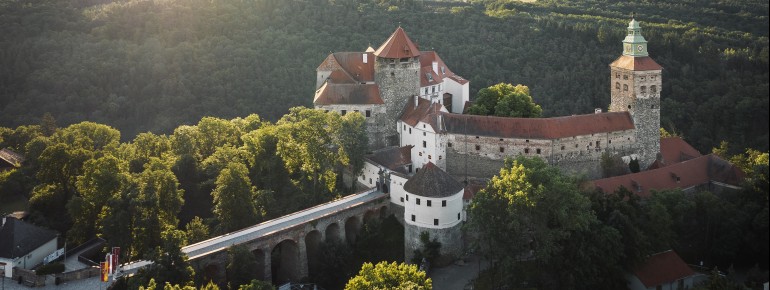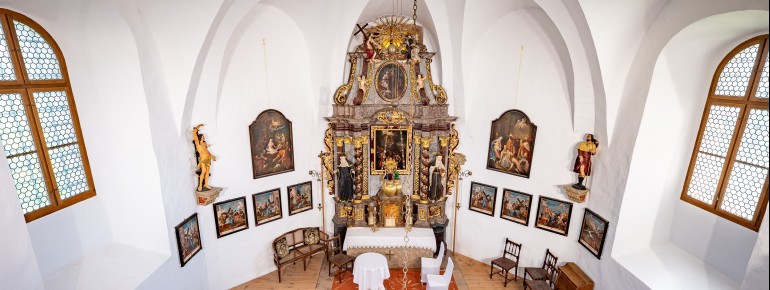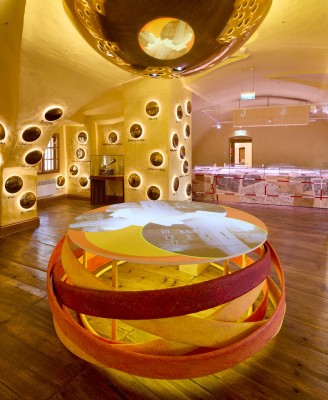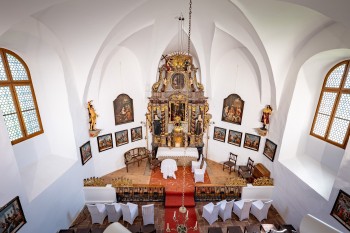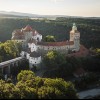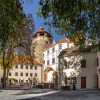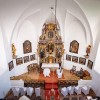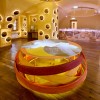Contents
Description
Schlaining Castle is located on the outskirts of Stadtschlaining in Burgenland and is one of the best-preserved medieval castles in Austria. It has had a number of changes in its 750-year history. Today it serves as a place where the history, culture and identity of Burgenland can be experienced. The central theme here is peace.
All about Burgenland
If you are interested in Burgenland, the Schlaining Castle is the right place. There is not just one, but two permanent exhibitions that focus on Burgenland. Those who are interested in history will find what they are looking for in the exhibition "Burgenland ab 1921". Here you will find everything worth to know about the political, economic and cultural development of Burgenland on a total of two floors. Other topics such as ethnic groups, religious communities and traditions are also highlighted. The permanent exhibition "Burgenland aktuell" deals with the energy history of Burgenland. In addition to information boards, there are also interactive learning opportunities.
Other permanent exhibitions
The permanent exhibition "Burggeschichten" provides insights into the castle and its history. The knowledge is brought through multimedia stations. Anyone who has always wanted to swing a sword or shoot a crossbow is also in the right place here. The exhibition "Schlaining and Frieden" is quite the opposite. On the third floor of the castle, the work of the Austrian Centre for Peace is presented from the beginning to the present day. All aspects of peace are explained using mainly classic exhibition elements. The fifth and final permanent exhibition takes visitors to the former synagogue which is located near Schlaining Castle. Objects and texts relating to Jewish life are presented in these rooms. It provides an insight into life at that time.
Special exhibitions
In addition to the permanent exhibitions of the Peace Museum, Schlaining also offers changing special exhibitions with historical and cultural approaches to the topic of "peace" in the former state rooms of the castle.
Historical Information
From war castle to peace castle
As Castrum Zloynuk the castle was mentioned for the first time in 1271. But it was not until the 15th century that the legendary knight Andreas Baumkircher turned the fortress into the ancestral castle of his mercenary troupe. The town of Stadtschlaining, which he founded, became a successful trading centre. After Andreas Baumkircher had fallen out with the emperor and devastated parts of today's Styria, he had him lured to Graz to execute him there in 1471.
In the middle of the 16th century the castle came into the possession of the Hungarian noble family Batthyány. After the death of the last owner of this line, it came into the possession of the Hungarian Chamber.
Since then, war and peace have determined the fate of the castle. But the former military headquarters of the mercenary leader Baumkircher finally became a place of peace. At the height of the "Cold War", Burg Schlaining became a unique centre for peace research in Austria, a meeting place between East and West in the shadow of the Iron Curtain.
Since 2004 there have been various exhibitions in Schlaining Castle.
Interesting facts
- The day pass at Schlaining Castle Museum of Peace is €20 making it one of the 3 cheapest tourist Attractions in the Burgenland.
How to get there
By car:
If you would like to reach Burg Schlaining by car, you can take the A2 from Vienna in the direction of Graz and then take the exit Pinggau/Friedberg. After this you should continue in the direction of Oberwart (Exit 95), in the city centre of which you turn left towards Stadtschlaining itself.
If you are coming from Graz, you should also take the A2 first, but of course drive in the direction of Vienna. After the Lafnitztal/Oberwart exit, take exit 111 in the direction of Stadtkern Oberwart and turn left towards Stadtschlaining.
By public transport:
Arrival by bus is also possible. From Vienna and Graz there is a bus via Oberwart to Stadtschlaining.

